1965-1970
The story of our practice begins long before many of us can remember, back in the days when Cooksville was just starting to take shape into the community we know today. It all started with a man named Robin H. Williams, who was one of the first to dedicate his life to caring for the eyes of our neighbours. After graduating from The Ontario College of Optometry, Dr. Williams became the first optometrist in Cooksville and opened his practice at 2581 Hwy #10 (Hurontario St., just south of Dundas, sometime in the 1940s. He lived on Kirwin Avenue, in Cooksville, where he quickly became a staple in the community, offering his expertise to those who needed it.
A few decades later, in 1963, the Ontario College of Optometry began its Doctor of Optometry Program, giving rise to a new generation of optometrists. One of those fresh graduates, Dr. Vince Zuccaro, had already set his sights on Cooksville. As a young boy, Vince would often visit the area with his family, especially to see George at his farm on Camilla Road, not far from the heart of Cooksville. Vince’s family owned a fruit store near Toronto’s “Sunnyside,” and he had a deep connection to this community that he knew would be the perfect place to start his practice.
In 1965, word around town was that Dr. Williams might be ready to retire. Seizing the opportunity, Dr. Zuccaro, with the help of his father, purchased the practice that had been running for over 30 years. And so, “Williams and Zuccaro, Optometrists” was born. The office, though small by today’s standards, was full of promise: a cozy waiting room with just four seats, a tiny frame dispensary no bigger than 5’x 5’, a lens grinding lab, and a single exam room where the magic happened.
As the years passed, Robin Williams began to slowly ease into retirement, and by 1967, the practice name was changed to “Zuccaro and Williams, Optometrists.” That was the same year that optometry was included in the Ontario Health Insurance Plan (OHIP), marking a huge milestone for the profession. It was a year of change in more ways than one—1967 also saw the Toronto Maple Leafs win their last Stanley Cup, a moment that would go down in history. In 1968, Mississauga officially became a town, bringing together the communities of Clarkson, Lakeview, Cooksville, Erindale, Sheridan, Dixie, Meadowvale Village, and Malton.
It was a time of growth, of change, and of connections, just like the story of this practice. From humble beginnings to a community cornerstone, we’ve been here for the people of Cooksville for decades, continuing the legacy of those who laid the foundation before us.


1970-1975
In the early 1970s, fate took a turn that would change the course of our practice. It was around 1971 when Dr. Vincent Zuccaro reconnected with an old friend from his Kappa Sigma fraternity days, Dr. Patrick Tracey. Pat had been practicing in Peterborough, Ontario, but life had a funny way of bringing them together. The two friends went to a Toronto Argonauts game, and what started as a fun outing turned into a life-altering conversation.
At the time, Vince had already established his practice in Cooksville, and Pat, who admired his friend’s dedication and success, was intrigued by the idea of joining him. The timing was right, and as the two talked, Pat realized that this could be a great partnership. He sold his two practices (one in Peterborough and one in Bancroft) and decided to make the move to Cooksville. On January 11, 1971, Dr. Patrick Tracey officially joined the practice.
To accommodate their growing needs, they moved to a larger office at 3071 Hurontario St., right across the street from T.L. Kennedy Secondary School, a space that would help them continue to serve the community as they expanded. But that was just the beginning. It was a space where they could be involved in the newest frontier in optometry—soft contact lenses.
At the time, optometry was entering a new era with the introduction of soft contact lenses, and Vince and Pat were at the forefront of this exciting development. Dr. Zuccaro worked closely with Dr. Al Isen in Buffalo, a pioneer in this emerging field, and with a pharmaceutical company as they learned together how corneal physiology was positively impacted by these new materials. They discovered how the conventional rigid contact lens could be improved, and as they did, the practice became one of the first in Canada to fit soft contact lenses. It was an unforgettable learning experience, one that marked the beginning of a new chapter not only in their professional lives but also in the field of optometry itself. Along with the development of contact lenses, innovations in disinfecting and preservative processes were also being explored, ensuring the safety and comfort of patients.
After two years of working as an associate, Dr. Tracey officially became a partner in the practice, and “Zuccaro and Tracey, Optometrists” continued to grow. The community took notice, and the practice became known for its innovation, its expertise, and its unwavering commitment to providing the best care possible.
In 1974, Mississauga itself was also growing, officially becoming a city. Dr. Martin L. Dobkin was elected as its first Mayor, and the city, whose name comes from the Ojibwa word meaning “River of the North of Many Mouths,” had a population of just 156,000 at the time. Square One Shopping Centre also opened its doors in 1973, becoming a central hub for residents. The same spirit of growth and transformation that defined the city would also come to define our practice, as we continued to evolve and serve the people of Mississauga, one patient at a time
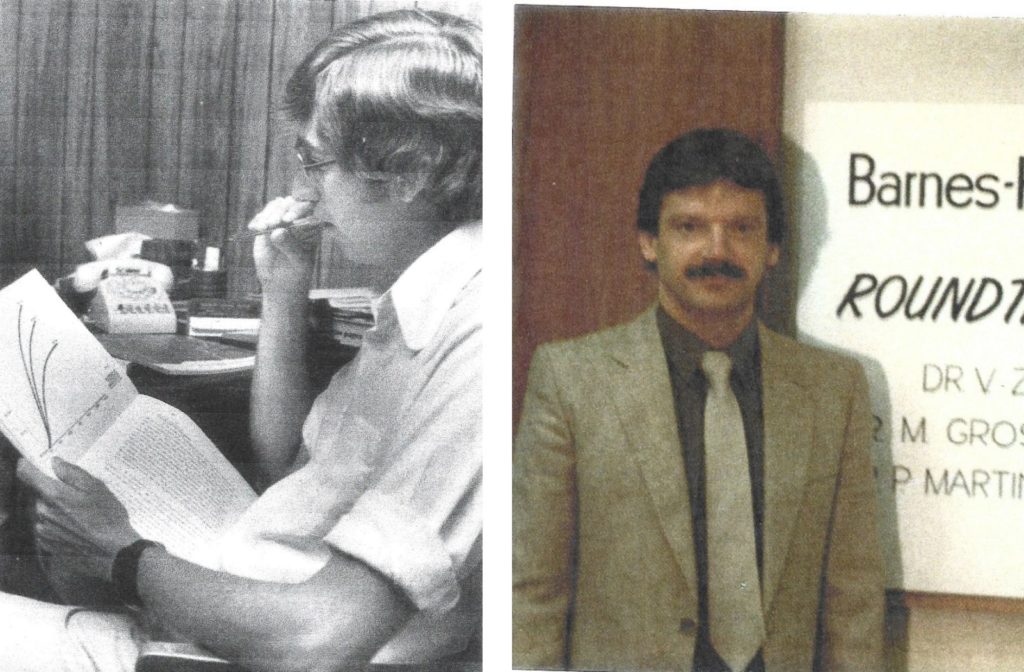
1975-1980
In the early 1970s, Mississauga was growing, and so was our practice. It wasn’t long before the practice reached its capacity, and it became clear that they needed to expand the team by hiring another optometrist.
Dr. Vince Zuccaro, ever the mentor, had been a clinician at the School of Optometry at the University of Waterloo when he first met Peter Martinello, a bright and ambitious graduating optometrist. Vince was immediately impressed by Peter’s knowledge, dedication, and inquisitive nature. He felt that Peter would be the perfect fit for the practice. Peter recognized that new technology was beneficial for the profession and was keenly interested in the advancements Vince and Pat were making. The new town of Mississauga was also attracting many Italian-Canadians, and Peter’s heritage would be a valuable asset for building the practice. So, when Dr. Martinello graduated in 1973, he didn’t waste any time. He joined the team, and just two years later, the practice officially became known as Zuccaro, Tracey, Martinello, Optometrists.
Dr. Martinello quickly became a vibrant force in the optometric community. He not only continued his work as a clinician at the School of Optometry but also developed a special interest in children’s vision, particularly those with learning disabilities. His passion for helping children led him to become a board member of The Vision Institute in Toronto, an organization dedicated to providing eye care services to vulnerable communities in need.
But the practice’s growth didn’t stop there. By 1976, it was evident once again that more space was needed. The team moved to a beautiful new office at 130 Dundas Street East, right at the corner of Dundas and Camilla Road. It was a move that allowed them to continue providing exceptional care while keeping up with the ever-expanding needs of the community.
Around the same time, Dr. Zuccaro’s career was taking a new direction. After spending several years working with the Province and the City, Dr. Zuccaro won the nomination and ran for MPP in his riding. Professionally, he had been working as a consultant for Barnes-Hind Pharmaceuticals in Sunnyvale, California, and in 1978, he was offered a one-year director position. Though he knew he’d eventually return to Mississauga, the allure of sunny California led him and his family to make the move. Little did they know, they would fall in love with the West Coast and end up staying there much longer.
With Dr. Zuccaro’s move, the practice was once again in need of another optometrist. Dr. Martinello was connected to Dr. Martin Falke, a new graduate who had been advised to reach out to him. After meeting with Martin, Dr. Martinello was confident that he would be an excellent addition to the team. In 1978, Dr. Martin Falke officially joined the practice, and with Dr. Zuccaro’s absence becoming permanent, the practice was renamed Tracey, Martinello & Falke, Optometrists.
The year 1978 was also a notable year in Mississauga’s history, as it marked the election of Hazel McCallion, the city’s longest-standing mayor. She would go on to lead Mississauga through decades of growth and transformation. And just a year later, in 1979, the city would experience a life-altering event. The infamous Mississauga Train Derailment, also known as the “Mississauga Miracle,” occurred on November 10, 1979. A CP Rail freight train carrying hazardous chemicals derailed and caught fire. The entire city, over 200,000 people, was evacuated, but miraculously, no one was injured. The event would become a testament to the city’s resilience and the strength of its community.
Through these years of change and growth, both for the city and for our practice, the doctors and staff continued to serve the people of Mississauga, ensuring that their vision—and our vision for the future—remained bright.
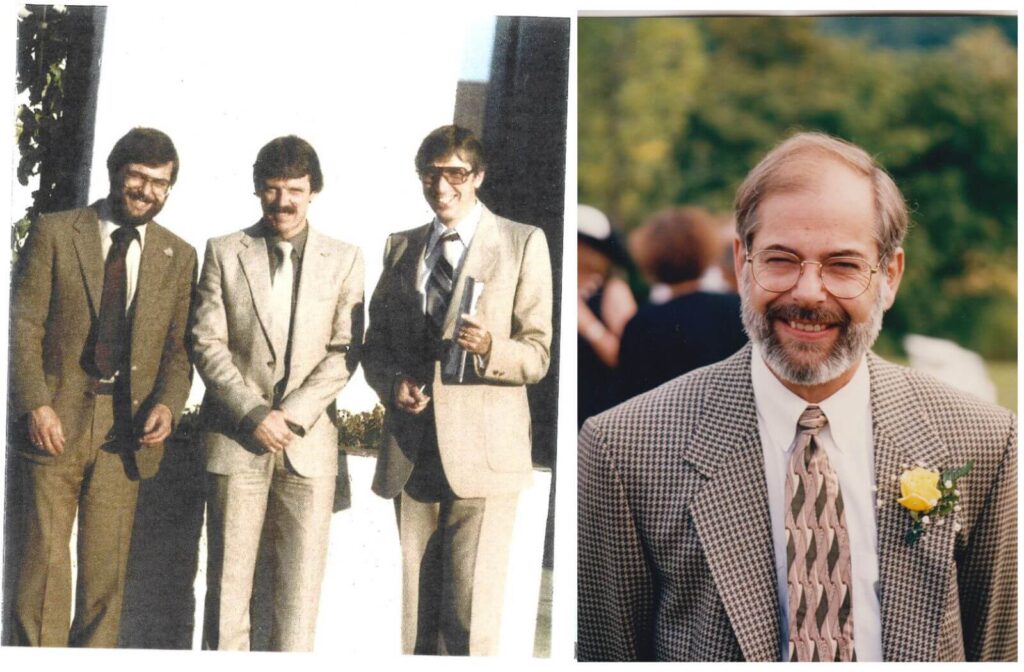
1980-1985
The 1980s saw continued growth for the practice, especially with the addition of Dr. Martin Falke. He quickly became an integral part of the team and the local community. In addition to his work at the practice, Dr. Falke remained a clinical supervisor at the University of Waterloo School of Optometry. His passion for optometry extended to special interests in contact lenses and sports vision, areas where he made a significant impact. He became a respected consultant in the field, serving on several eye care advisory panels.
Dr. Falke’s expertise earned him an invitation from Bausch & Lomb to join their Olympic Sports Vision Team. In 1994, he had the honour of providing visual performance screenings at the Winter Olympics in Lillehammer, Norway.
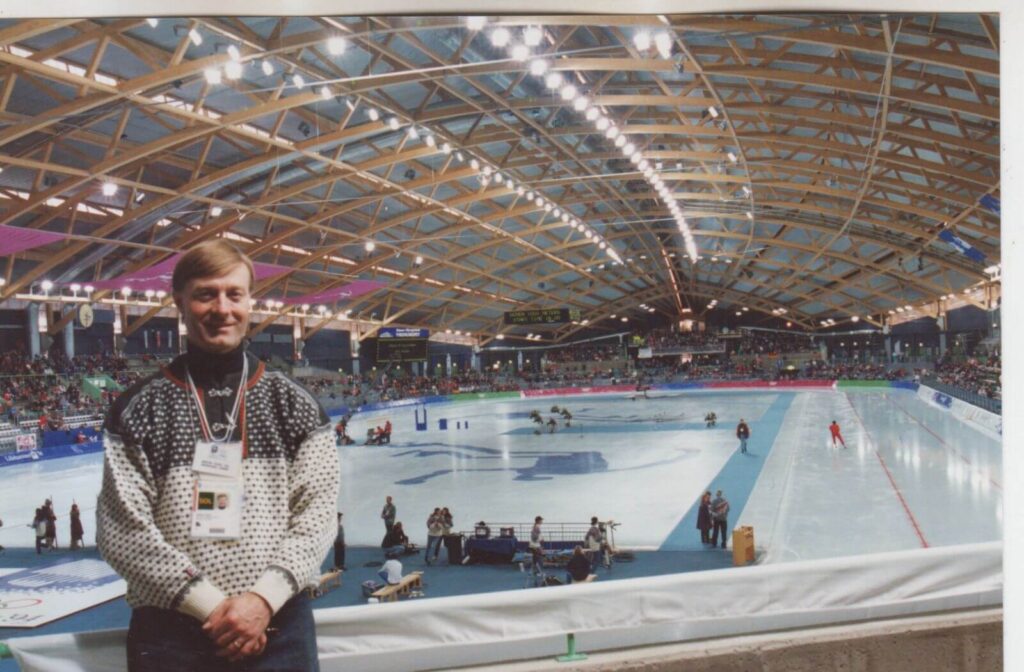
During this time, Dr. Patrick Tracey’s passion for advancing the Optometry profession continued. His dedication to improving the field led him to take on key leadership roles, including serving as the chair of the Complaints Committee and as a member of the Discipline Committee at the College of Optometrists of Ontario. He also became the Chair of the OHIP Committee at the Ontario Association of Optometrists, where he worked tirelessly to negotiate better fees for Optometric services. It was a time when his influence and expertise helped shape the future of Optometry in Ontario, ensuring the profession’s growth and sustainability.
The 1980s also marked a time of great strides in the field of Optometry itself. It was a decade of change, as optometrists began to take on a broader role in managing eye diseases, including the use of pharmaceutical treatments. In some parts of the United States, optometrists were granted the ability to prescribe medications for conditions like eye infections, inflammation, and even glaucoma. This shift not only expanded the scope of Optometry but also significantly enhanced the level of care patients could receive.
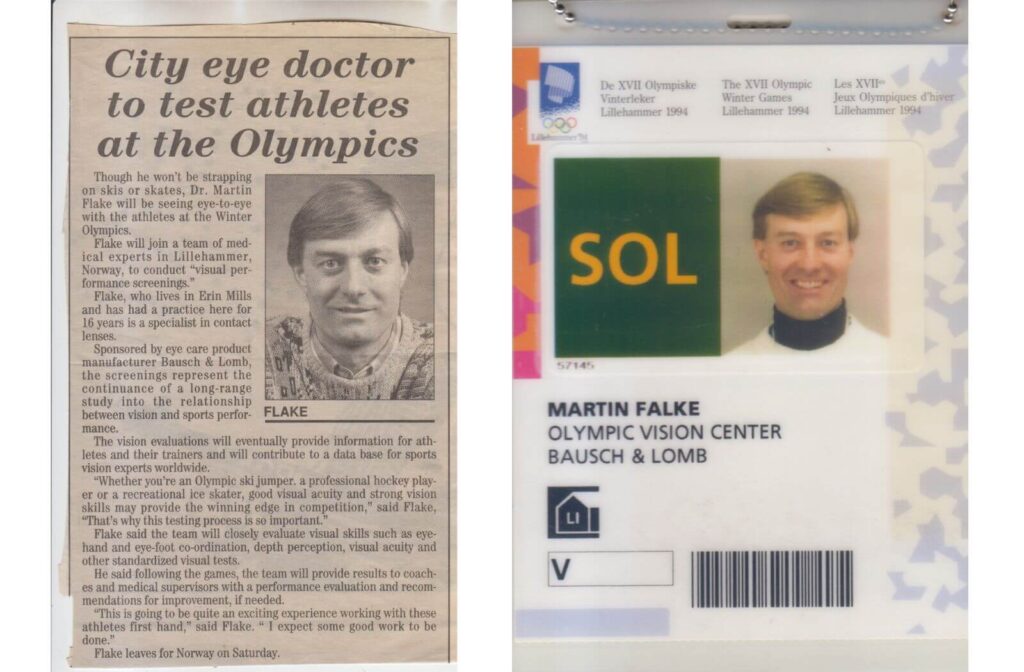
1985-1990
Up until this point, the practice had been growing right alongside the community, and it became clear that the time had come for a new chapter. More space was needed to continue providing the level of care their patients deserved, especially as the partners had big plans to add an optical dispensary to further serve their patients’ needs. With that vision in mind, in 1987, the practice moved to its now current location at 101 Queensway West.
It was around this time that the need for optical expertise became even more apparent, leading the practice to welcome one of its most skilled and longstanding team members—Rory Dwyer.
Rory’s journey into the optical world began in a rather unexpected way. After graduating from Northern Secondary High School in 1982, Rory had dreams of becoming a tool and die maker. Unfortunately, the timing wasn’t ideal, as the country was in the midst of a recession, and jobs in his chosen field were scarce. Then, one day, a family friend, the father of one of Rory’s close companions, who was an optician, suggested that he give the optical business a try. Rory decided to follow him, and after fabricating his very first pair of glasses, he saw firsthand the positive impact it had on the patient’s life—and in that moment, Rory was hooked. He knew he had found his calling.
Rory’s passion for opticianry blossomed under the mentorship of Master Optician George Allister Stronach. For five years, Rory trained at Mr. Stronach’s chain of optical stores, McManus and Stronach, gaining invaluable experience. Along the way, he worked extensively in laboratories while also attending night courses at Seneca College’s Optician program for two years, honing his skills and expanding his knowledge.
It was during this time that fate took another turn. Dr. Tracey was having dinner with his friend Mary, who owned a pool supply store next to one of the locations where Rory was training, Econom-Eyes Optical. Dr. Tracey mentioned that the practice was moving to a larger location and that they were in need of someone to run their optical dispensary. Mary immediately thought of Rory and believed he would be the perfect fit for the role. She arranged a meeting, and after dinner with Drs. Tracey, Martinello, and Falke, Rory officially joined the team on November 17, 1987. Not long after, Rory’s identical twin brother, Francis, also joined the practice, and the two dedicated brothers worked together side by side for many years.
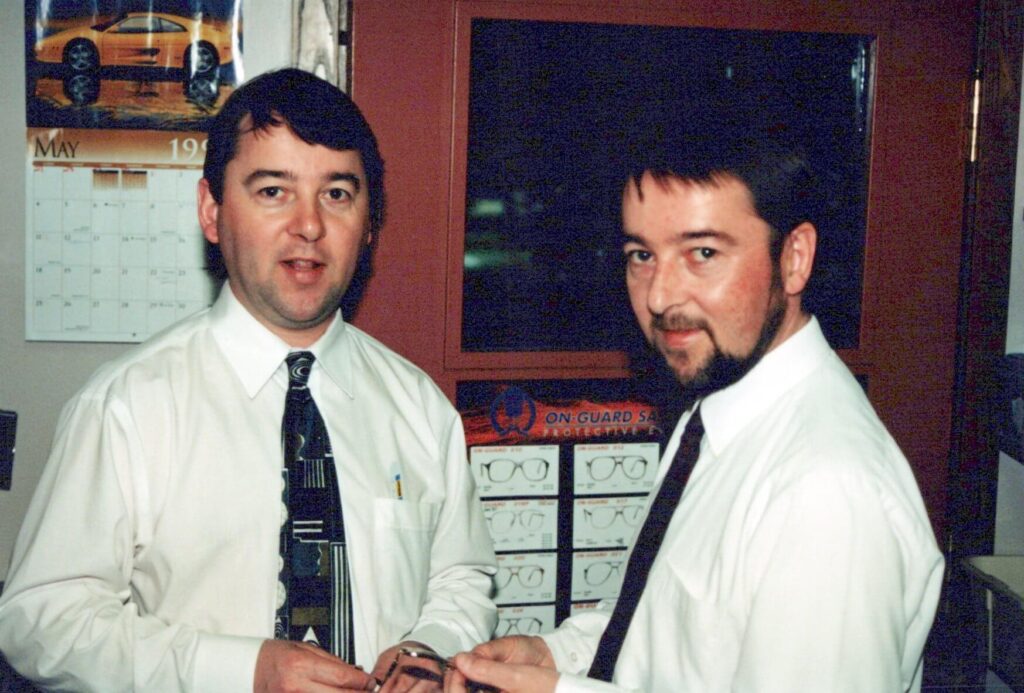
Around the same time, another story was unfolding. Dr. Joan Turnbull, a local optometrist, was preparing for retirement. Dr. Turnbull was the only woman to graduate from the College of Optometry in her class in the early 1950s. She started practice in Oshawa, where she not only treated patients but also taught at the University of Waterloo School of Optometry as a clinical supervisor. She had served on the Council of the College of Optometrists of Ontario and was part of a family deeply rooted in optometry—her brother-in-law, nephew, and daughter-in-law’s father were all optometrists, and her son, who became an optometrist, settled in Regina. To top it off, Dr. Turnbull’s daughter, a literary agent at the time, went on to marry renowned author John Irving.
After moving to Mississauga to raise her family, Dr. Turnbull practiced out of her home on Applewood Road and then relocated her practice to her new home on Dixie Road. After years of dedicated service, she was ready to slow down and find a new chapter. She had heard that our practice was expanding and contacted Dr. Tracey to see if there might be space for her. It was a perfect match, and Dr. Turnbull joined the practice as a wonderful addition. She remained with the team for seven years, retiring at the end of 1994.
1987 also marked the completion of the Mississauga Civic Centre, located near the Square One Shopping Centre. The Civic Centre became the heart of this rapidly growing city, and just as the city flourished, so too did the practice—thanks to the dedication and commitment of people like Rory and Dr. Turnbull, who helped make the practice a trusted and cherished part of the community.
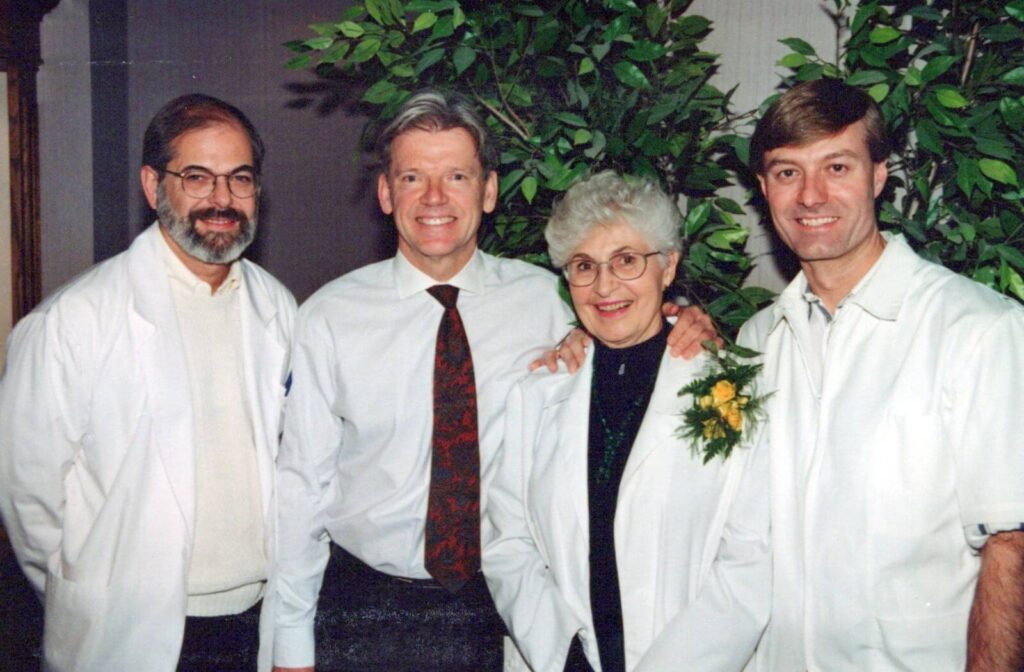
1990-1995
Dr. Joseph Chan always knew that that he wanted to practice close to his hometown of Cooksville. Having just graduated from the University of Waterloo School of Optometry in 1991, Joe felt a deep connection to the community that had shaped him. So, with enthusiasm and hope, he sent out resumes to local optometrists.
It wasn’t long before Joe’s passion and drive caught the attention of Drs. Tracey, Martinello, and Falke. They recognized something special in him—not only in his dedication to the profession but also in his commitment to the community. After meeting with them, they knew they had found someone who would be a great fit, and they offered him a place at the practice right after his graduation.
Soon after joining the team, Joe’s remarkable knack for technology became apparent. He was eager to modernize the practice, and his knowledge of computers quickly became an invaluable asset. He introduced a new computer-based system called Genie, which streamlined appointment booking and invoicing, bringing the practice into the digital age. It was clear that Joe wasn’t just a doctor; he was an innovator, and his contributions were so significant that in 1994, just a few years after he started, he was invited to become a partner in the practice. With that, the practice became known as Tracey, Martinello, Falke & Chan, Optometrists.
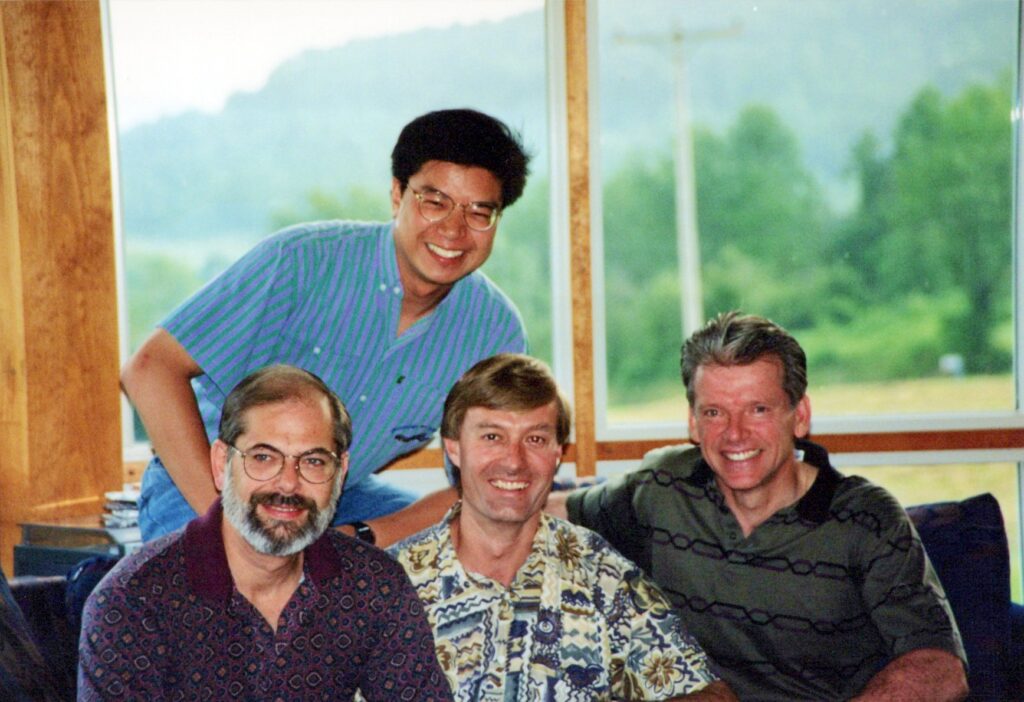
Joe’s involvement in the optometric community, though, didn’t start there. Even as a student, he was immersed in the world of vision care. During his time at the University of Waterloo, he completed a placement at The Vision Institute of Canada (formerly The Optometric Institute of Toronto), where Dr. Martinello was previously involved. After graduation, Joe continued to build on this foundation, earning an MBA with a focus on Not-for-Profit Management, which would serve him well in his future roles. He soon became a Board member of the Vision Institute of Canada, and after a few years, he was honored to serve as President for two years.
Joe’s passion for his profession didn’t stop there. He became actively involved with the Ontario Association of Optometrists, where he served as Chair of the Communications Committee. Under his leadership, the committee launched ambitious campaigns aimed at raising public awareness about the vital role optometrists play in eye health. His commitment to advancing the profession led him to a position on the Association’s Board, and from 2000-2002, he was elected President. Even after his presidency, Joe continued to contribute, chairing the Therapeutics Pharmaceutical Agents (TPA) Committee, which was instrumental in submitting a proposal to expand TPA privileges for optometrists in Ontario.
The early 1990s were a transformative time in the field of optometry, as advancements in technology began to revolutionize vision correction. LASIK and PRK—laser eye surgeries that offered minimally invasive options for vision correction—became available, changing the lives of many patients. At the same time, new contact lenses designed to correct astigmatism, known as toric contact lenses, hit the market. These innovations brought even more possibilities for optometrists, helping their patients see the world more clearly. Through his dedication, service, and passion for innovation, Dr. Joseph Chan’s journey has not only shaped the practice at 101 Queensway West but has also left a lasting impact on the optometric community as a whole.
1995-2000
After the practice had successfully implemented its new computer and software system, it quickly became clear that there was still more room to improve efficiency within the office. Sharon, the office manager at the time, was eager to ensure the practice ran smoothly, so in 1997, she was sent to a training course for the new software program, Genie. It was there that she met Terri Fracassa, a skilled trainer who was deeply involved with the software’s development and marketing. At the time, Terri was working at another optometry office, and she had mastered the ins and outs of the system.
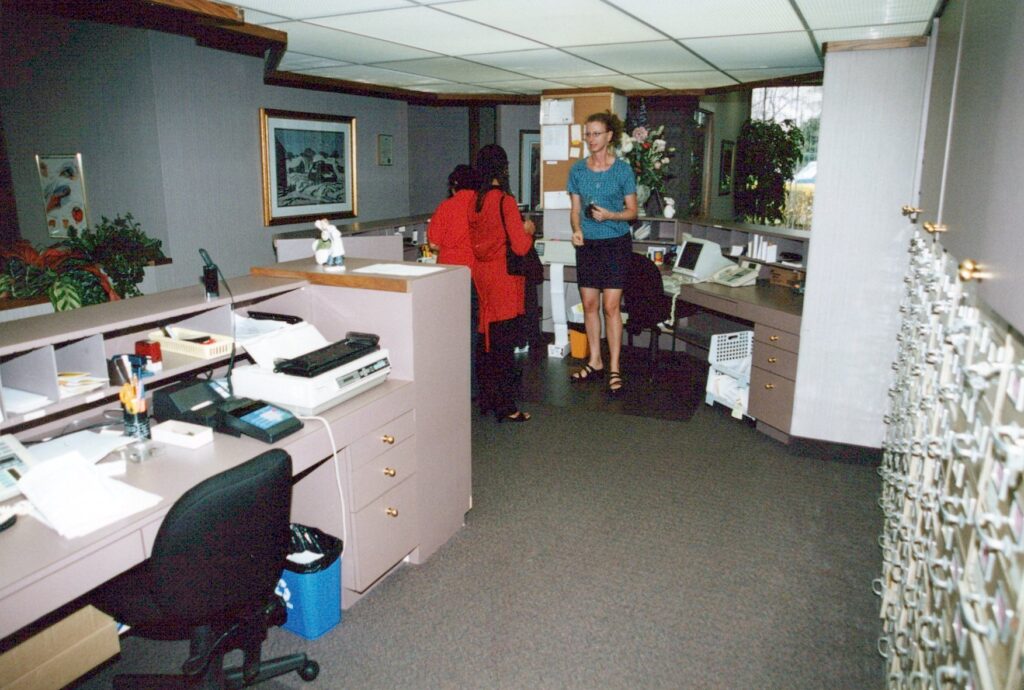
During the course, Sharon approached Terri with a request: could she help the doctors transition from paper binders to the new computer system for managing their schedules? Terri, with her warm personality and expertise, agreed. For a full week, she worked alongside Sharon and the team, teaching them how to use the software and guiding them through the process of digitalizing their office operations.
Over the next few years, Sharon and Terri stayed in touch. Then one day, Sharon mentioned that she was planning to leave her position, and she couldn’t help but think that Terri would be the perfect fit to step into her shoes as the new office manager. Sharon knew firsthand how smart, kind, and intuitive Terri was, especially in how she interacted with patients. The doctors would be lucky to have her.

At first, Terri was a little hesitant. Running a large practice was a big step, and the idea of managing everything made her nervous. She interviewed with the doctors, but after some careful thought, she initially turned the offer down. The doctors, though, saw something special in Terri and didn’t want to let her slip away. After another conversation, they gently encouraged her to take the leap—this would be a wonderful opportunity to learn, grow, and challenge herself.
And so, on March 20, 2000, Terri joined the practice as office manager, and the rest, as they say, is history. She dove in wholeheartedly and never looked back, quickly becoming an integral part of the team and the heart of the practice. Around the same time, in 1997, Mississauga was experiencing its own transformation. The Living Arts Centre opened its doors in the heart of downtown, bringing a burst of creativity and culture to the city. It became a vibrant hub for music, theater, and visual arts, and was a reflection of Mississauga’s growing cultural scene.
2000-2005
As the practice continued to grow alongside the Mississauga community, the partners knew it was time to welcome another optometrist to the team. In 2003, Dr. Joe Chan attended the University of Waterloo’s annual Interview Day, a highly anticipated event where new graduates could explore potential positions with practices across cities and provinces.
Lareina Yeung, a bright and ambitious student ready to graduate, was eager to settle in the Greater Toronto Area. Having grown up in Markham, she dreamed of finding a practice where she could build a long-term career. After a few interviews, Lareina met Dr. Chan, and instantly, she felt drawn to the practice’s collaborative approach and the values that guided it. Dr. Chan, struck by her positive outlook and infectious energy, saw in Lareina a strong potential contributor to the team. He invited her to meet with Drs. Tracey, Martinello, and Falke, who all agreed that her warmth and composure would make her a perfect fit for the practice, especially when it came to connecting with patients.

Lareina was so impressed with the office and staff that she eagerly awaited the call from Dr. Chan offering her the position. On August 18, 2003, Lareina officially joined practice. Over the next few years, she expanded her expertise by working as an associate at two other practices closer to her home in Markham. Then, in 2007, when Dr. Peter Martinello decided to semi-retire, Lareina became a partner, marking a new chapter in her career.
During this time, Dr. Yeung’s love of travel and optometry merged beautifully when she joined eye care missions to Jamaica, Tunisia, Morocco, Peru, and Ecuador, helping to provide vital eye care to underserved communities around the world.
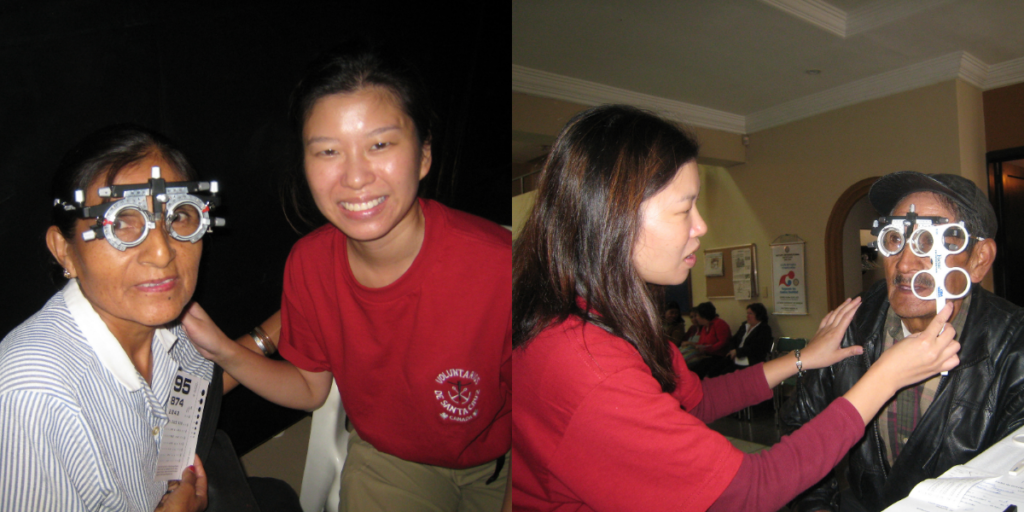
Around the same time, changes to optometry registration laws allowed practices to adopt business names beyond the doctors’ names. Recognizing the need to reflect their strong ties to Mississauga, Drs. Tracey, Martinello, Falke, Chan, and Yeung decided to rename the practice Queensway Optometric Centre (QOC). Lareina’s passion for design and style became a valuable asset in shaping the practice’s new logo, creating a quarterly patient newsletter, and even helping to launch one of the first websites for optometry practices.
In 2006, a close colleague invited Dr. Yeung to volunteer on the Continuing Education Committee at the Ontario Association of Optometrists (OAO). Recognizing her unique perspective as a new graduate, they thought Lareina could offer fresh insights into what might resonate with younger optometrists. Encouraged by Dr. Chan and driven by her enthusiasm for the profession, Lareina applied to become a Board Member at the association. From there, her involvement grew—she participated in committees like the Symposium Committee, Children’s Vision (helping to bring the Eye See…Eye Learn program to Peel Region), and the Website Communications Task Force. By 2007, she was chairing the Member Recruitment committee, and in 2008, she became Board Lead for Community, as well as Chair of the Continuing Education Committee.
Her passion and work ethic didn’t go unnoticed, and she was soon appointed to represent the OAO on the national stage as the Canadian Association of Optometrists (CAO) Representative. She co-chaired the National Children’s Vision Initiative during her two years in that role. In 2013, Dr. Yeung was elected Vice President of the OAO, and soon after, she was honoured with the President’s Award for her outstanding contributions to the profession. However, in 2014, after many years of dedication to both her practice and her professional community, Dr. Yeung chose to step back for a time, focusing on her family.
Through it all, Lareina’s journey has been one of unwavering commitment—both to the practice and to the greater optometry community.
As the practice continued to grow and evolve, it became clear that Queensway Optometric Centre had outgrown its space. In 2005, an opportunity arose when additional space became available in the building. The team took full advantage of this and embarked on a major renovation to better serve their patients. This expansion created more room in the dispensary and allowed for the installation of advanced equipment, ensuring the practice could continue to meet the ever-growing needs of its community.
2005-2010
At Queensway Optometric Centre, innovation has always been at the heart of their approach, blending cutting-edge technology with a deep commitment to patient care. It was in the spring of 2002 that the centre made a bold leap forward, investing in state-of-the-art pre-screening equipment. To fully embrace this new technology, the team knew they needed some extra help. That’s when Karen Falke, fresh from her first year at the University of Waterloo, was offered the opportunity to join the practice as a summer student.
Karen, with her eager mind and thirst for knowledge, dove into the new technology, quickly becoming proficient while gaining invaluable experience in an environment that prioritized warmth and patient-centered care. But her journey in optometry had begun much earlier. Inspired by her father, Dr. Martin Falke, whose dedication to eye care and his ability to make a lasting impact on people’s lives left an indelible mark on her heart, Karen knew from a young age that she wanted to follow in his footsteps. By the time she was in fourth grade, her dream was set she would become an optometrist. After earning her degree from the University of Waterloo’s School of Optometry in 2008, Karen was ready to embark on her professional journey. She married in 2007 and now practices as Dr. Karen Stafford.
Her career path took her to an optometry practice in Brampton, and later, to TLC Laser Centre, where she where she honed her skills in co managing LASIK and refractive surgery patients. Each experience enriched her, shaping her both personally and professionally. Then, in 2010, as Queensway Optometric Centre grew, the need for another optometrist led Karen to join the team. From the moment she walked in, she felt an instant connection to the practice’s mission—offering compassionate, family-focused care to each patient who walked through their doors.

As the years went by, Karen’s personal life blossomed as well. The arrival of her two daughters, Katelyn and Makayla, deepened her passion for pediatric eye care. She embraced the role of lead optometrist for the Eye See…Eye Learn program in Peel, a program close to her heart that ensures children receive routine eye exams, setting them on a path toward healthy vision.

A serendipitous conversation around 2005 with Keith Pelley, President of the Toronto Argonauts, would lead to another exciting chapter in the practice’s story. Pelley, who played hockey with Drs. Tracey and Falke, shared with them that the team did not have optometrists. That conversation planted the seed. In 2006, Drs. Tracey and Falke attended their first Argonauts training camp, held at the University of Toronto Mississauga Campus. Since then, they’ve provided comprehensive vision screenings for the players each year, helping to ensure their visual health. Queensway Optometric Centre had the honour of hosting the Grey Cup at their office, a celebration of the Toronto Argonauts’ accomplishments.
Two years later, in 2008, Queensway Optometric Centre made another significant stride forward by introducing retinal photography. This cutting-edge technology, which had transitioned from academic settings to private practice, enabled the doctors to document, diagnose, and educate patients about their eye health in new and more precise ways. It was yet another thoughtful investment that reflected the practice’s unwavering commitment to providing the highest standard of care for their patients, keeping them at the forefront of eye health advancements.
2010-2016
As the first female partner at Queensway Optometric Centre, Dr. Lareina Yeung was entrusted with the important task of finding a maternity leave locum. She wanted to ensure that the doctor she selected would be someone who would make both her patients and staff feel comfortable and cared for. After several rounds of interviews, she met Dr. Miranda Ranieri, and everything clicked.
Miranda’s journey began in her hometown of Waterloo, Ontario, where she discovered her love for squash at the age of 7. Naturally talented, she quickly rose through the ranks and earned a sports scholarship to Yale University. In 2008 she was Captain of the squash team, earned league MVP and won the NCAA championship. After graduating she went on to play professionally, representing Canada, with competitions all over the world. In those four years she was three-time Canadian National Champion and competed at the Commonwealth Games in Delhi, India in 2010. A highlight of her career was earning 2 silver and one gold medal at the 2011 Pan American Games in Guadalajara, Mexico. But in 2012, after an impressive athletic career, Miranda decided it was time to retire from the sport and pursue her true calling in the medical field, specializing in the eyes.
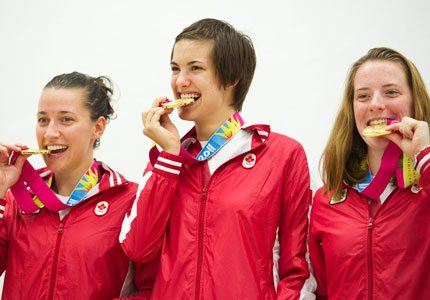
In May 2016, Dr. Miranda Ranieri graduated with honours from the Optometry program at Nova Southeastern University, eager to begin her new career. She knew she wanted to be part of a progressive practice, and when she interviewed at Queensway Optometric Centre, Dr. Yeung instantly recognized Miranda’s warmth, approachability, and skill. It was clear that Miranda would be a perfect fit, and Miranda felt the same connection to the office and its caring environment.
In 2013, Queensway Optometric Centre took another significant step forward in its commitment to providing the best care possible for its patients. Recognizing the transformative potential of new technology, they made the decision to invest in Optical Coherence Tomography (OCT), a groundbreaking tool that was redefining the way eye diseases were diagnosed. OCT uses light waves to capture detailed, cross sectional images of the retina, offering a non-invasive way to see beneath the surface of the eye. This technology allowed the team to diagnose eye conditions with unprecedented accuracy, ensuring that treatment plans and referrals for more serious conditions were timely and precise. Before long, OCT became an essential part of the practice, helping the team continue to deliver exceptional care and remain at the forefront of eye health advancements.
2016-2020
QOC’s team of dedicated professionals continued to offer their patients the kind of care that made them feel like family. Over the years, the team grew and evolved, blending the wisdom of experience with the fresh ideas of new graduates. This blend of perspectives, new technologies, and cutting-edge techniques created something truly special. Longtime staff members, like Rory and Terri, brought not only their expertise but also a warmth that made every patient feel welcome and valued. In fact, entire generations of families returned, knowing they would be met with the same care and compassion every time.
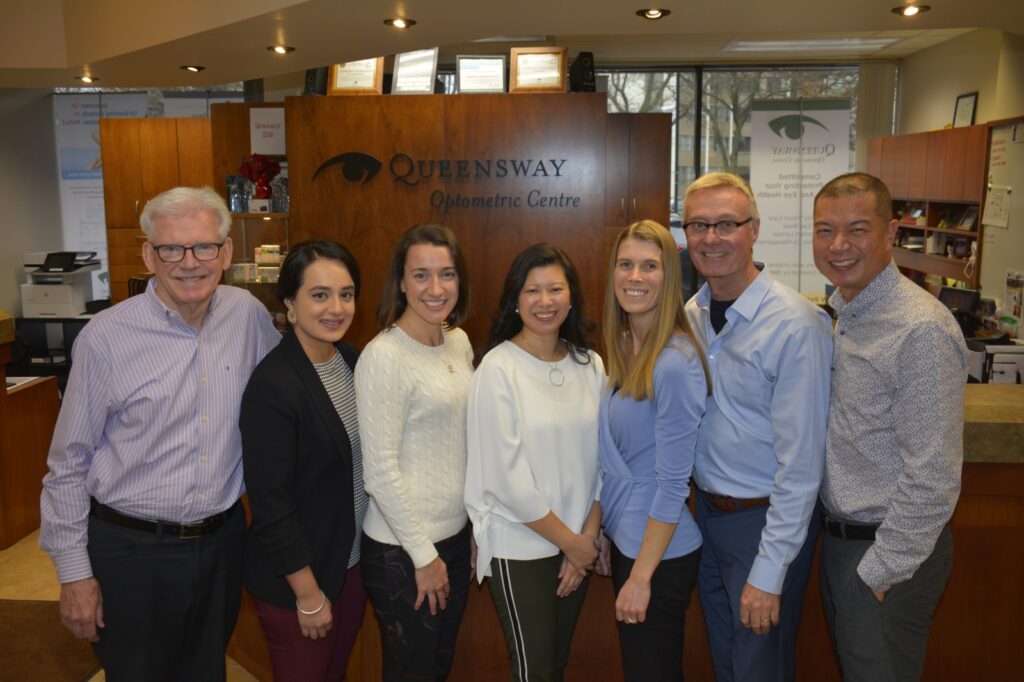
Then, in 2017, after half a century in practice, Dr. Patrick Tracey decided to ease into semi-retirement. Just two years later, in 2019, Dr. Peter Martinello also transitioned into full retirement. With the departure of these two pillars of the practice, QOC set out to form a new team. Dr. Karen Stafford came on board as a partner, and it was clear she was the perfect fit.
In that same year, the team met Dr. Mehtab Mann. From the moment they crossed paths, they knew she was someone special—kind, highly skilled, and with a personality that made people feel at ease. Dr. Mann’s journey had taken her all over the world—she graduated from McMaster University, went on to Aston University in Birmingham, and even spent time training in London and Waterloo before practicing at QOC. After a year with the practice, she moved to the U.S. with her family, but in 2024, she returned to Canada, and with open arms, QOC welcomed her back.

In late 2019, just as the practice was finding its new rhythm, Drs. Yeung and Ranieri shared the joyous news that they were both expecting babies in mid-2020. With two more wonderful additions to their families on the way, the practice was once again in need of a temporary team member to fill in. They didn’t have to look far before they met Dr. Lawrence Chan. His calm confidence and approachable manner won them over immediately. They knew their patients would enjoy their visits with him. And, since Lawrence shared a last name with Dr. Joseph Chan, he quickly became known to patients as Dr. Lawrence.
Dr. Lawrence’s credentials were impressive. He graduated from the Michigan College of Optometry at Ferris State University in 2019, receiving high distinction. His externships took him to a variety of important places, where he honed his skills in providing comprehensive eye exams, managing ocular diseases, and fitting specialty contact lenses. He was ready to make an impact at QOC—but just before he could begin, the world changed.
In early 2020, the COVID-19 pandemic caused a global shutdown, and optometry practices like QOC were forced to close their doors for several months, offering only emergency care. When the practice was finally able to reopen in June 2020, it was with strict infection protocols and social distancing measures in place. It was a tense and stressful time for everyone, but Dr. Lawrence rose to the occasion. With Drs. Yeung and Ranieri nearing their due dates, it wasn’t safe for them to return to work just yet, so Dr. Lawrence stepped in to help the practice navigate through the reopening.
The journey through the pandemic wasn’t easy, and it took some time for things to return to normal. But as the world slowly started to emerge from the shadows of COVID-19, QOC came back stronger than ever. The team was beyond grateful for the patience and understanding of their loyal patients during this challenging time, and they couldn’t have asked for a better community to support them through it all.
And so, QOC continues to thrive, a place where care, kindness, and expertise come together to make each patient feel like part of the family.
2020-2025
As we arrive at the present day, Queensway Optometric Centre continues to grow and evolve alongside the vibrant community it has proudly served for over 60 years. In 2022, we marked a heartfelt transition as we celebrated the full retirement of Dr. Patrick Tracey and the semi-retirement of Dr. Martin Falke. At that time, Dr. Miranda Ranieri, who had been working as an associate, stepped forward with great honour to carry the torch. Becoming the newest partner at QOC, she embraced the opportunity to build upon a legacy of excellence in eye care that has always been at the heart of our mission.

One of our greatest sources of pride has been our shared commitment to making a difference beyond our own walls. For the past 14 years, thanks to the incredible generosity of our suppliers, doctors, staff, and patients, we’ve led the way in supporting Optometry Giving Sight—a global charity focused on sustainable eye care solutions in underserved communities. Together, we have raised over $145,000, making us the top fundraising practice worldwide. This achievement is only possible because of you—and for that, we are deeply thankful.
Innovation continues to guide our practice forward. In the past five years, we’ve invested in the latest technologies to better serve your eye health needs. Our new Zeiss retinal camera captures ultra high-resolution, wide-field images to help us detect eye diseases with greater precision. We’ve expanded our Dry Eye services with LipiFlow, a state-of-the-art treatment designed to bring comfort in an era of digital screens and fast-paced living. We’re also proud to support our youngest patients by offering the latest in Myopia Control, helping to manage nearsightedness using specialized glasses and contact lenses. And with advanced diagnostics, we can now more effectively detect early signs of keratoconus and provide personalized treatments to protect your vision.
Of course, none of this would be possible without our exceptional team—an incredible group whose dedication spans from one year to over three decades. Each team member brings care, knowledge, and heart to every patient interaction, ensuring you always feel seen, heard, and well cared for.
At QOC, we don’t just see patients—we see neighbours, friends, and generations of families who have grown with us. This is more than a place for eye care; it’s a place where people truly know your name. And we’re so grateful to have you as part of this story.
Cheers to the next 60 years of caring, growing, and seeing your best—together.


